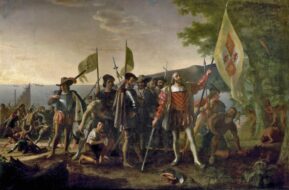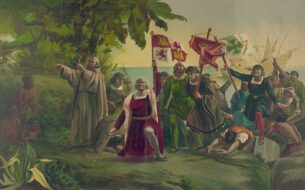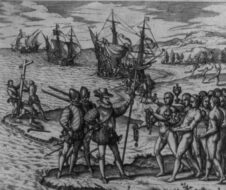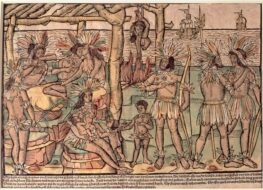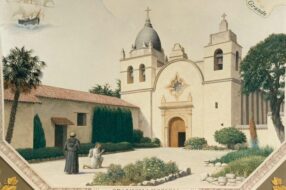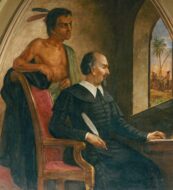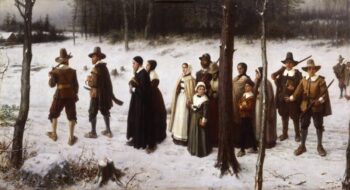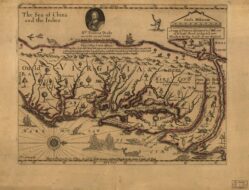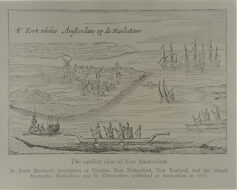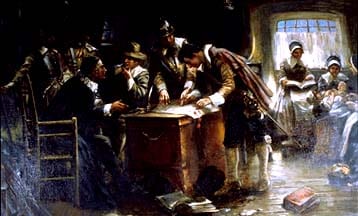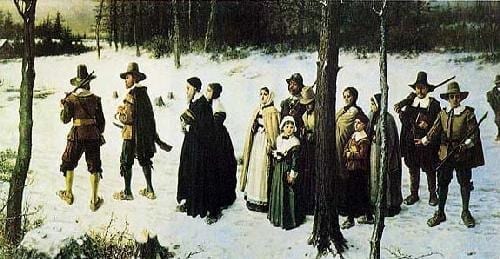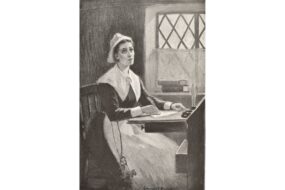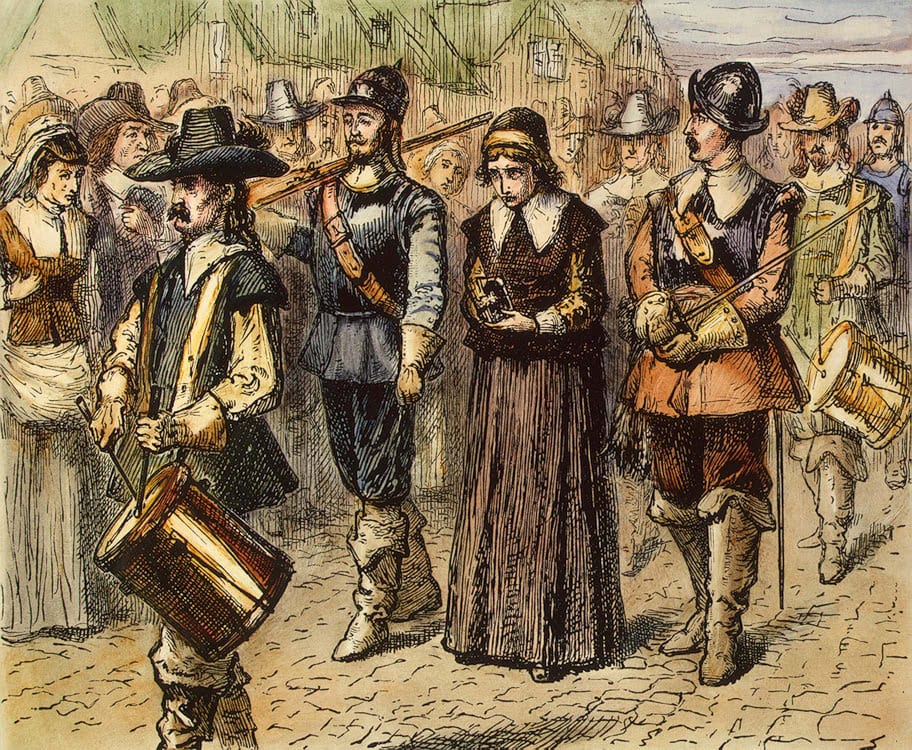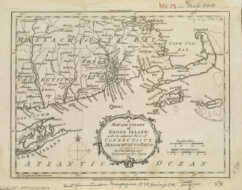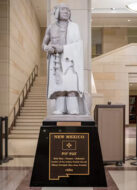
No study questions
No related resources
Introduction
Francisco Palou, a Franciscan friar and student of Junípero Serra at the Convento de San Francisco in Mallorca, traveled with Serra to New Spain in 1749 and for nearly two decades worked closely with him in Baja California. When Serra left to found missions in Alta California, Palou stayed behind, becoming the “President” or superior of all the Baja missions. After control of those missions was given to the Dominican order, Palou rejoined Serra, helping with the administration of the Alta California missions and recording their early history. He completed a biography of Junípero Serra three years after Serra’s death in 1784.
The biography portrays Serra’s exemplary zeal and dedication to the conversion of the indigenous people of the New World. Palou describes Serra’s effort as a remarkable success, frequently noting the number of converts made in the first years at the newly founded missions. Palou sees Serra as empowered by God with the ability to inspire both “fear” and “love” in the native peoples he encountered, despite his foreign religious customs, slow and limited acquisition of native languages, and expectation that the natives would gladly labor with him to build Christian missions.
Written from a Christian and Spanish perspective, the biography offers little or no real insight into the perspective of the native tribes Serra sought to convert. Hence, one must view with some degree of skepticism Palou’s accounts of Serra’s evangelical success. In the excerpt below, Palou ascribes the pacification of a tribe of hostile natives in the Santa Lucia Mountains to the miraculous effect of a painting of the Virgin Mary. This success is followed by a setback that Palou attributes to the crime of one of the soldiers who provided military protection to the new missions. Historians, noting that Palou’s account of these events differs somewhat from the accounts Serra relayed in his letters, speculate that the painting impressed the natives (members of the Tongva tribe) because they thought it depicted a matriarchal figure in their own religious tradition, and that the later altercation between the Tongvas and the soldiers was more complicated than Palou claims. Nevertheless, Palou’s account gives valuable insight into how the Spanish understood their encounters with the indigenous inhabitants of California.
The excerpt begins a year after the founding of Mission San Carlos in Monterey, a time when Serra is already impatient to found two new missions along the coast between Monterey and San Diego, the site of the first mission in Alta California. Serra has to delay these plans due to the unavailability of soldiers to serve as guards at the new mission sites.
Source: Francisco Palou’s Life and Apostolic Labors of the Venerable Father Junípero Serra, Founder of the Franciscan Missions of California, 1787, translated C. Scott Williams, with an introduction and notes by George Wharton James (Pasadena: 1913) p. 100 – 130.
Seeing that for these reasons the third Mission could not be begun, our Venerable Father, with his disciple Fr. Juan Crespi,[1] devoted themselves to the conversion of the Indians of Monterey; but as there was no one who knew their language they encountered many difficulties at first, but finally God willed it that a door should be opened by means of a converted Indian boy whom they had brought from Old
California,[2] who, through the many conferences which the Venerable Fr. Junipero had him conduct with these pagans, began to understand them and to pronounce a few words in their language. When he could explain to them what was said he gave them to understand that the purpose of the Fathers in coming to their land was to direct their souls into the way of heaven.
It was on the 26th of December of the same year that the first baptism was celebrated among these gentile[3] people and it was for the fervent and devoted heart of our Venerable Father a source of unbounded joy. Little by little others were won and the number of Christians increased so that three years later when I came up to that Mission there were in all one hundred and sixty-five; and when the Venerable Founder Junipero terminated his glorious career he left one thousand and fourteen baptized souls of whom many had already passed on to enjoy God and eternal life, as the fruitage of his incessant and Apostolic labors.[4]
One of the things that had greatly helped in these conversions, or perhaps I had better say, that was the principal foundation of this most important Conquest, was the strange marvels and prodigies which God, our Lord, had wrought in the eyes of the gentiles that they might fear and also learn to love the Catholics: Fear, to restrain them so that in spite of their numbers far in excess of the little group of Christians, they showed us no insolence; and Love, which brought them to hear with affection the gospel doctrine which we had come to teach them, and to embrace the gentle yoke of our holy law. . . .
Serra Founds Mission San Antonio de Padua
THAT ardent zeal for the conversion of the gentiles which ever burned in the heart of our Venerable Father Junipero gave him no rest nor permitted him to delay in putting into operation the means necessary for the carrying out of his plans. As soon as he had finished the exploration of the Carmel River and had set to work there the men employed in the cutting of timber,[5] he returned immediately to Monterey in order to prepare for his trip to the Santa Lucia Mountains, and soon after set out with the Fathers destined to serve as the founders of the Mission of San Antonio.[6] They took with them all the necessary equipment for that new Mission as well as the guard of soldiers necessary for their protection. They traveled twenty-five leagues toward the southeast from Monterey, in the direction of these mountains, and when they had arrived at the base of them they found there a large canyon which was called Los Robles[7] as it was thickly covered with oak trees, and there they set up the camp. Having examined the contour of the land and found a wide and sightly plain in the canyon near to a river (to which they immediately gave the name of San Antonio), it seemed to them to be the proper place for the building of the Mission because there was a good head of water in the river even in the month of July, which was the time of the greatest drought, and also because the waters could be conducted without difficulty for the irrigation of the land.
As all had agreed upon the choice of the place for the Mission, the Venerable Father ordered that the mules should be unloaded and the bells hung up from the branch of a tree and as soon as everything was in readiness the Servant of God began to ring them, shouting at the same time as if he were beside himself, ‘”Hear, oh Gentiles, come, oh come to the Holy Church! Come, oh come and receive the Faith of Jesus Christ!” The Reverend Father Fr. Miguel Pieras, one of the two Missionaries, and the one designated to act as the President of the [new Mission San Gabriel], after watching him awhile said: “Why do you weary yourself unnecessarily, as this is not the place where the church is to stand, nor is there anywhere within hearing in these regions a single pagan soul? It is of no use to ring the bells.” To this the Father answered: “In this way, Father, let me give expansion to my heart, as I would that this bell might be heard in all the world, as indeed the Venerable Mother, Sister Maria de Jesus de Agreda,[8] expressed her desire, or at least I would that the bell might be heard by all the pagan people who live in this sierra.”[9] They then set up a large cross which, after it had been blessed, they venerated.[10] A little shelter of branches was also made, and underneath was placed the table for the altar and here the Venerable Father celebrated the first Mass in honor of San Antonio, the Patron Saint of this Mission, on the 14th of July of the year 1771 . . . . A single Indian who had been attracted by the ringing of the bell, or by the strangeness of the people there gathered, happened to draw near at the time that the Mass was being celebrated and so was a witness to the act of the Divine Sacrifice.[11] This the Venerable Priest discovered as he turned from the altar in order to preach the sermon after the reading of the Gospel, and with his heart overflowing with joy he expressed himself in his sermon in the following manner: “I trust in God and in the favor of San Antonio that this Mission will come to be a great settlement of many Christians because we see here what has not been seen in any of the other Missions founded hitherto, that at the very first Mass the first fruits of paganism have been present, and he will surely not fail to communicate to his fellows what he has here seen.”
This is indeed what took place, as we shall see hereafter how the hopes of our Venerable Father were fulfilled to the letter. As soon as Mass was over he began to manifest his affection with little gifts to the gentile in order to attract by these means the rest; and this he accomplished that very day, for as soon as the word spread, many of them, moved by curiosity, began to come in. Having attempted to make them understand by signs (in the absence of an interpreter) that the friars had come to settle and live in this region, [the natives] showed their great appreciation of the same by continuing to make their visits, with little gifts of pinions[12] and acorns, which they brought to them and from which, as well as from other wild grains, they make their meals and porridge which they use for food, and which they harvest in great abundance. The Venerable Father reciprocated by giving them in return for their gifts strings of beads of glass of different colors, as well as some of our food made from corn and beans and which immediately pleased the palate of these pagan people. They immediately began the construction of the wooden houses which were to serve for the dwelling-house of the Fathers with their servants, the barracks for the soldiers, and the church for Divine Worship, surrounding all these buildings with a stockade for defense so that the squad of six soldiers and corporal could act as guard. Within a short time the Fathers had attracted the attention of the Indians who became singularly attached to them because of the love and affection with which they treated them, and immediately they began to show their entire trust in the Fathers by bringing to them their grains as soon as they had harvested them, saying that they might eat what they pleased of them and that the rest they could keep for the winter season. This the Missionaries did with great satisfaction, wondering that the gentiles should have such confidence in them from the very first, and also wondering how much greater that trust might be when, after being converted to baptism, they might come to look upon them as their real Fathers.
In this good opinion our Venerable Father Junípero freely shared as he saw these demonstrations of regard, and it was in this hope that he left the Missionaries of this Mission of San Antonio in order to return to Monterey, after remaining a fortnight with them. Following the instructions of the Venerable President, the new Missionaries gave themselves up with the greatest consecration to the learning of the language of these barbarians, making use of the small boys in order to obtain from them the names of things and to explain to them that their object in coming to this land was to direct their souls toward heaven. . . . When they had begun to teach them the doctrine and to baptize, the Mission had been founded only two years, and at that time when I visited it there were one hundred and fifty-eight new Christians.
The Visions of Sister Maria de Jesus de Agreda
These friars told me the following story. There was among the Indians a very old woman, whom they called Agueda, who, judging by her appearance, must have been over one hundred years old. She came to request baptism from the Fathers and when they asked her why she wished to be a Christian she replied that when she was a young girl she heard her father tell of the arrival in that country of a man who wore the same dress that the friars wear but who had come neither on foot over the hills but flying, and that he had taught them the same things which the Missionaries were now preaching, and when she had come to remember this she felt moved to become a Christian.
Not daring to accept wholly this story of the old woman, the Fathers inquired carefully concerning the matter of the other neophytes[13] and they all unanimously replied that such was the story that they had heard from their fathers and that it was a general tradition which had been handed down. When I heard this story from the Fathers I remembered immediately a certain letter which had been written in the year 1631 by the holy Mother, Sister Maria de Jesus de Agreda to the Missionaries employed in the Spiritual Conquest of New Mexico and that among other things she says that our Father, San Francisco, had sent to these nations of the north two holy men of the Order in order to preach the faith of Jesus Christ (the men were not Spaniards), and that after having made many converts they suffered martyrdom. On estimating the time when they made their visit I concluded that it might have been one of these holy men of whom the convert Agueda had spoken.
This Mission of San Antonio, as I have already said, is situated in the center of the Sierra of Santa Lucia about eight leagues from the coast of the Pacific Ocean . . . and is twenty-five leagues from the port of Monterey. . . . The soil is very fertile and supplies abundant harvests of wheat, corn, beans, and other cereals brought out from Spain and with which the inhabitants now have supplied themselves. During the summer time the climate is extremely hot but in the winter time it is extremely cold on account of the severe frosts which are felt there. The stream which never ceases to flow during the year and which is close to the Mission houses is often frozen over to such a degree that the water is sometimes frozen solid until the sun shines again and melts the ice. For this same reason there have been serious losses in the early part of the season, especially if the corn and beans are planted too early. So very severe was the frost that fell on Easter Sunday in the year 1780 that a great part of the wheat fields which had already begun to ear, and was in blossom, was dried up like the dried stalks seen in the month of August. This misfortune brought great despair to the Indians but affected the Fathers even more seriously when they considered what drawbacks would follow the lack of provisions at the Mission, as it would be necessary for the young converts to go out into the hills in search of wild grains for food as they did when they were pagans.
But the Fathers, feeling a revival of their faith and trusting in the patronage of San Antonio, invited all the new Christians to join them in nine days of prayer. They all attended the services with great punctuality and devotion; and just before the period of prayer began the Fathers ordered that the frozen fields be irrigated, although they appeared to be entirely dry. Within a few days they noticed that the wheat began to sprout up from the roots, and by the time the Novena was over the field was green. They continued to irrigate it and it grew with such rapidity that within the fifty days, at the time of the feast of the Holy Spirit, the grain was as tall as it had been before, with fine large ears, and they were able to see it ripen at the usual time of harvest and to gather the largest crop which they had ever seen from the same amount of land.
When the Fathers and the Indians recognized their deep obligation for so very special a prodigy as the Lord our God had deigned to work in their favor, through the intercession of their patron Saint and miracle-worker, San Antonio, they all rendered to him the most sincere thanks. This incident and many others . . . have contributed a great deal toward the confirming of the faith of the converts and to the bringing in of the gentiles, so that it has happened that the number of Christians in that Mission exceed those of any other, as the number of them just before the death of the Venerable Father Junípero amounted to 1084 neophytes. . . .
Serra Moves Mission San Carlos to Carmel, Making it His Headquarters
AFTER a fortnight spent in establishing the Mission of San Antonio, the Venerable Father President Fr. Junipero set out thence for Monterey with the most earnest desire of founding the Mission of San Luis [Obispo]; but for the lack of troops . . . his desires were frustrated until the commandant . . . might be able to bring them up ; and so he occupied himself in the meantime in the transferring of the Mission of San Carlos to the banks of the Carmel River. . . .
When [his] preparations had been finished he set out for the place designated for the [Carmel] Mission, distant about a league from the garrison, to live there a sort of hermit life, having for his dwelling a little shack in which he lived. His work was that of overseer, but many times that of a day laborer, until a building had been erected in which he could find shelter from the very cold wind which is felt in that canyon almost all the year round. His first work was that of the hewing out of a great cross, which, after having been blessed, was erected with the help of the soldiers and the servants and fixed midway in the space destined for the quadrangle and which was near to the little house that served him for a dwelling. Another house was erected for a provisional church so that he always had this most holy symbol as his constant companion. He venerated it as soon as it was daybreak and had the soldiers of the troop sing there a Hymn of Praise. Here the servant of God also said the matin prayers[14] and the first prayers of the day and then he immediately would celebrate the Holy Sacrifice of the Mass which would be attended by all the soldiers and servants. Then they would all go to their work, each one to his place, the Venerable Father acting as engineer and overseer. Many times during the day he venerated the Holy Cross, repeating there the prayers of the divine office. . . .[15]
Whenever the Indians would come to visit the Venerable Father, and the day rarely passed in which they did not come, being attracted either by curiosity or by the presents he gave them, the first thing he did was to make the sign of the cross on their bodies with his own hand, and then he made them worship before the Holy Cross. When these sacred ceremonies were finished he would give them some little present, either food which he had ordered made for them of wheat, or boiled corn, with a porridge made from the meal of these grains, or else beads and trinkets, and so he tried to win their favor as far as possible, learning to talk with them in their own language. The young Christians also used to come to see him and would ask permission of Father Crespi to go, as they said, to see the Old Father, and he had such a good time with them showing them the greatest affection, as if they were really and truly his own children. He taught them to salute everybody with the holy words, “Amar de Dios” — Love God — and this salutation became so general that even the pagan people used it not only in speaking to the Fathers but to any other Spaniard, and so it extended over all the region, touching even the hardest heart whenever they would hear these gentiles use the expression, as it was just as if they heard their own companions speak it whenever they met them on the road . . . .
As soon as the Venerable Father had finished the erection of the chapel and dwelling house, which was at the close of the year 1771, he called his companion, Father Crespi, and the new Mission was moved with all the Christian neophytes, and there both of them began the work of this Spiritual Conquest. This was his own peculiar Mission in which he remained (with the exception of the time spent in visiting the Missions and in the necessary trips of his ministry as President) until he died, leaving in this Mission alone 1014 baptized persons, including children, the greater part of them having received the Sacrament from the Father himself, for in this matter he was beyond all degree zealous and with a thirst for souls which seemed never to be satisfied.
Mission San Gabriel Arcangel is Founded, After the Miraculous Calming of Hostile Natives
. . . About the 7th of July of the year 1771 the packet-boat “San Antonio” sailed from the port of Monterey carrying the six Missionaries for the three Missions of the south, and the commander, Don Pedro Fages. After a week of sailing they arrived in the port of San Diego on the 14th . . . . [From there] the establishing of the new Mission was undertaken . . . .
. . . The Fathers . . . guarded by ten soldiers, left San Diego, accompanied also by the muleteers carrying the equipment. . . . After going about forty leagues they arrived at the Rio de los Temblores[16] . . . and just as they were in the act of deciding as to the location of the Mission, a great multitude of gentiles came up, all armed and under the direction of two captains who, with blood-curdling yells, tried to hinder the proceedings. As the Fathers feared that a battle was imminent which would surely result in the death of not a few, one of them produced a canvas on which was painted the image of Our Lady of Sorrows and held it up in view of the barbarians.
He had scarcely done this when they all, subdued by the vision of this beautiful image, threw down their bows and arrows and came running hastily forward. The two captains threw down at the feet of the Sovereign Queen[17] the beads and trinkets which they wore about their necks, as a sign of their greatest respect, and also to indicate that they wished to make peace with our company. They invited all the people from the surrounding villages who, in great numbers, men, women and children, kept coming in to see the Most Holy Virgin, bringing with them loads of various grains which they left at the feet of Our Most Holy Lady, supposing that she needed them for food the same as the rest. . . .
The sight of the image of Our Lady produced a wonderful change upon the gentiles surrounding the Mission of San Gabriel, and they came very often to visit the friars, seemingly not able to sufficiently express their joy that they should have come to live among them . . . .
The first Mass was celebrated under a little shelter made of branches on the day of the Nativity of Our Lady, the 8th of September, and on the next day work was begun on the chapel which was to serve as a provisional church, and also a house for the Fathers and another for the troops, all made of poles and surrounded by a stockade as a precaution against possible attack. The greater part of the wood for the building was cut down and dragged in by the pagans themselves, who also helped in the construction of the houses, and for this reason the Fathers were encouraged to hope for a great success in the work, seeing that from the very beginning there was no opposition to the gentle yoke of our Evangelical Law.
Confrontation Between the Natives at San Gabriel and the Mission’s Military Guard
At the time when the natives seemed to be most content their good disposition toward us was seriously upset by an outrage committed by one of the soldiers upon one of the head chiefs of the village, and what was worse, by committing a sin against God Our Lord. As the gentile chief naturally thought of taking vengeance for the outrage committed against himself and his wife,[18] he gathered together all his neighbors from the near-by villages and inviting all of the warriors to arm themselves, he led them down to the place in the field where two of the soldiers of the Mission were pasturing and taking care of the horses, one of them being the evil-doer. As soon as these soldiers saw the armed band approaching they put on their leather jackets as a defense against the arrows and prepared themselves for battle, as there was no way by which they could advise the captain of the guard, who, by the way, was ignorant of the deed committed by the soldier.
The gentiles had no sooner come within bowshot, when they began to let fly their arrows, aiming all of them against the offending soldier. The latter immediately aimed his gun at the Indian who seemed to him to be the boldest, presuming that he was the captain [ie, chief], and discharging his piece, killed him on the spot. As soon as the others saw the deadly force of this new weapon, whose effect they had never before experienced, and when they also saw that their arrows did no harm, they turned and fled, leaving the unhappy [chief] dead upon the ground. From this deed the Indians became very much frightened.
A few days after the above incident the captain arrived with the Fathers, bringing the equipment for the Mission of San Buenaventura,[19] but fearing that the Indians might make some attempt to avenge the death of their chief, he decided to increase the guard of the San Gabriel Mission up to the number of sixteen soldiers. . . . The commander then went on with his remaining soldiers to Monterey, taking with him the soldier who had killed the Indian in order that he might not serve as a means of provocation to the rest. . . .
So we see that four Missionaries remained in charge of the station of San Gabriel, but as the two formerly assigned to the work here were taken sick they had to retire shortly after to Old California, and the two assigned to San Buenaventura remained in charge and continued with all possible kindness and tact to attract to the Mission the pagans who, little by little, came to forget the deed of the soldier and the death of their chief, and to bring in some of their children to be baptized. One of the first of these children was the son of the unfortunate chieftain whom the widow gladly gave to the Fathers for this purpose, and her example was followed by many others, so that the number of Christians began to increase. Two years after the founding of the Mission, on the occasion of my visit to it, they had baptized seventy-three, and at the time of the death of our Venerable Father the number was 1019 neophytes.

Conversation-based seminars for collegial PD, one-day and multi-day seminars, graduate credit seminars (MA degree), online and in-person.
